Exploring Classic German Fare

Hearty Food from the Heart of Europe
Do you know your wiener schnitzel from your jägerschnitzel? Let’s take a tour of classic German fare.
Key West insiders and European visitors in the know are aware that Chef Martin is the only island source for authentic German favorites. Along with classics like Wiener Schnitzel, bratwurst, and sauerkraut, Martin’s Key West is your go-to for home-style comfort foods like German potato soup, spätzle, and red cabbage.
If you are unfamiliar with German cuisine, this set of notes will help you get the schnitzel sorted from the spätzle. Those lucky enough to have experienced this great ethnic food, either in its native settings or as translated by the Deutschamerikaner—the German Americans serving up traditional specialties in Pittsburgh, Chicago, Milwaukee, and German strongholds across the United States since the 1670s—can relish some mouthwatering memories. So grab a mug of bier and a brezeln and get ready to explore some of Europe’s heartiest, tastiest food.
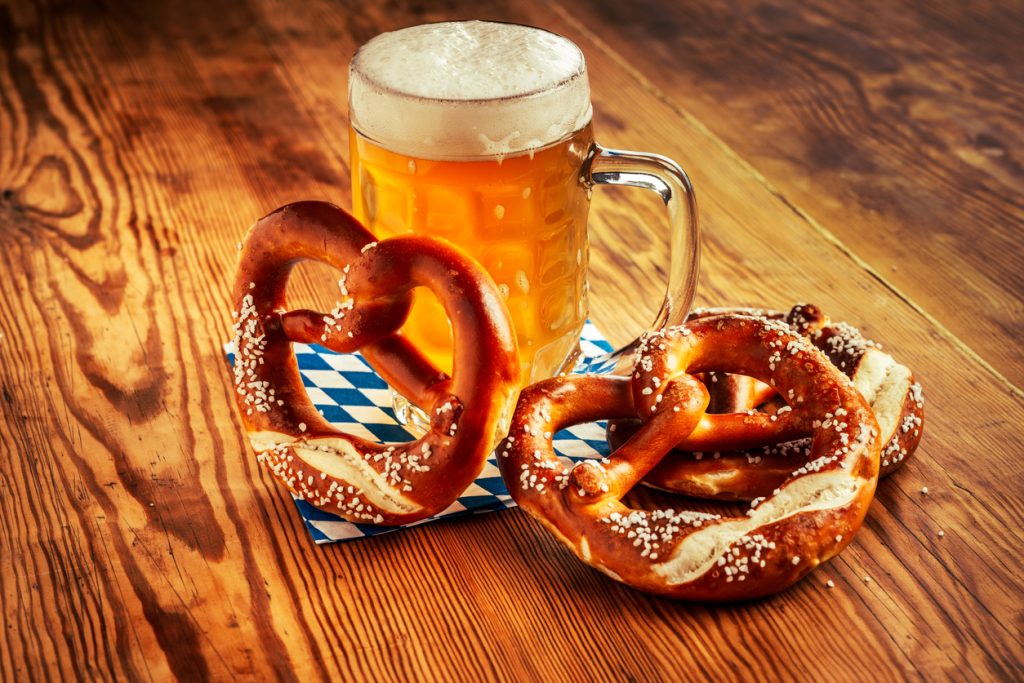
Much More Than Meat and Potatoes
Deep-diving into traditional German cooking, it soon becomes apparent that bacon and/or bacon fat are frequently used to flavor dishes. It’s difficult to find a stronger recommendation for an ethnic food genre than that! In fact, German fare is commonly thought of as being rich and heavy, built around meat and potatoes, featuring lots creamy sauces and tasty gravies. This type of cooking is especially common in Bavaria, the largest German state, and throughout the mountain region.
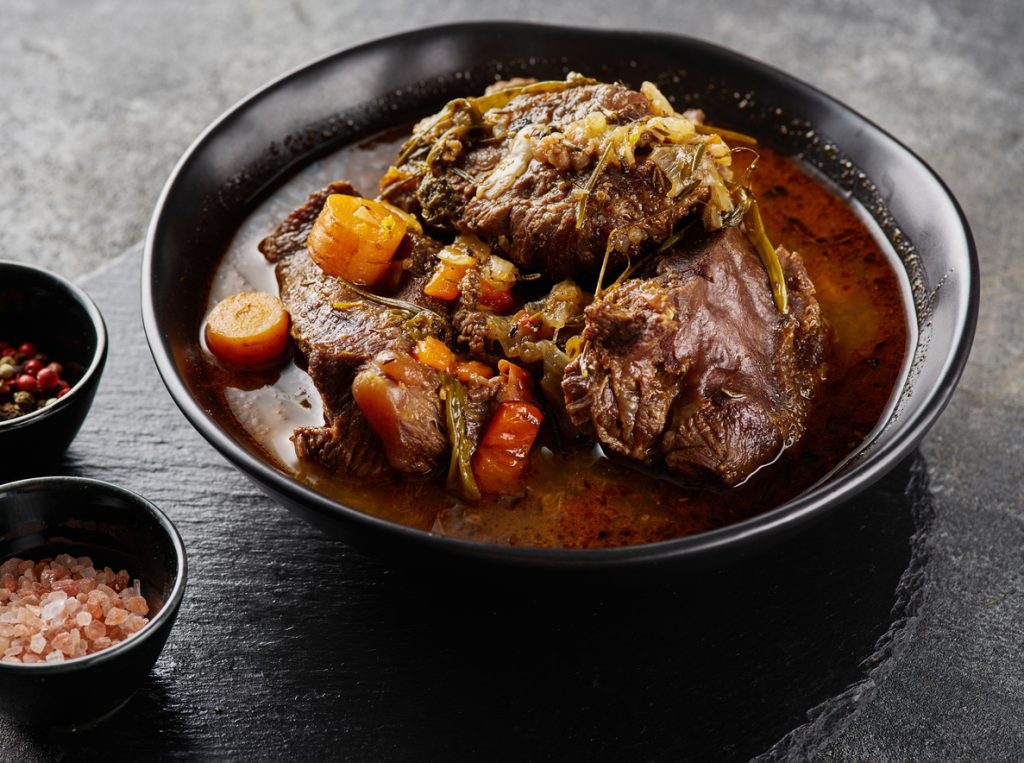
But Germany is the 6th largest European country, and with 16 constituent states and the second largest population in Europe after Russia, so there is great regional variation in culinary tradition and customs. From Schleswig-Holstein on the northern border with Denmark, to the city-states of Hamburg and Bremen, south to Bavaria on the Alp-studded border with Austria, you can find a multitude of local specialties and favorites. Some are so passionately beloved that their names and recipes are protected by law. Germany’s rich history, regional traditions, seasonal specialties, and modern culinary innovations all combine to create an enticing buffet of delicious treats.
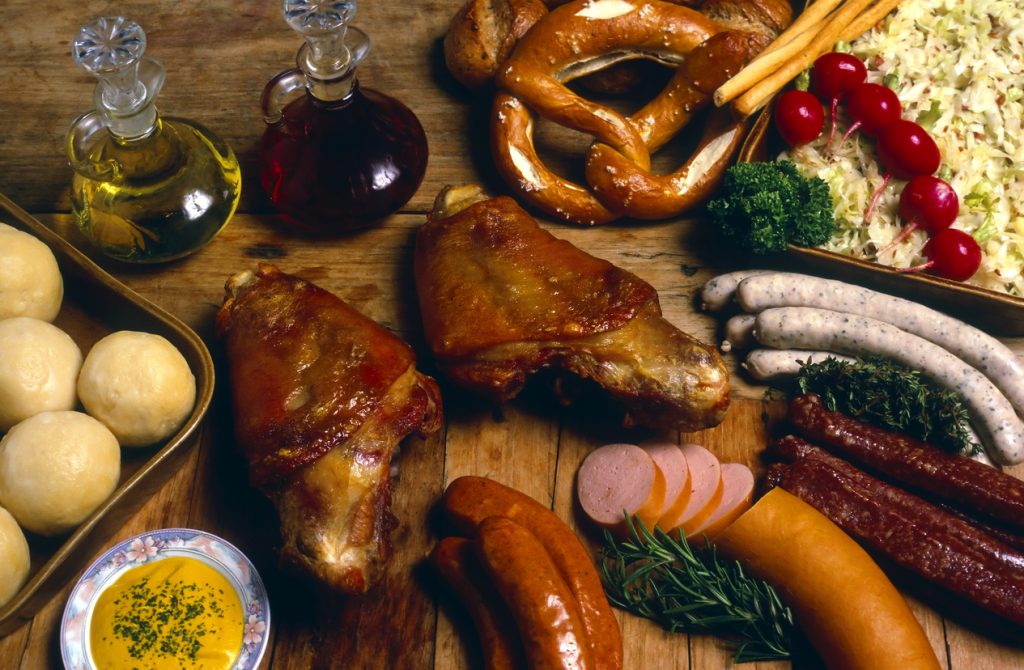
Wiener Schnitzel
Let’s clear up one thing right out of the gate: German Wiener Schnitzel (or wienerschnitzel) is not a hot dog, and the American fast-food chain hot dog restaurant is erroneously named. In fact, those boiled or grilled pinkish-red, mustard-slathered mystery meat tubes on white bread buns that go so well with baseball games and the 4th of July—the ones that are generally considered to be as symbolic of America as the stars and stripes—are actually German in origin. Yes, it’s true—wieners, franks, hot dogs—are technically Frankfurter Würstechen, or Frankfurt sausage.
The city of Frankfurt in central Germany has been renowned for meat sausages since medieval times. The thin sausages, traditionally cased in sheep’s intestine, aged but not salt-cured, then smoked at low temperatures to acquire flavor, have actually been a protected Frankfurt regional specialty since about 1860. The name Frankfurter Würstechen has been locked in as a trademark since 1929, and can only be used for sausages produced in the Frankfurt area.
In Germany, the sausages known in North America as hot dogs are called Wiener Würstchen or Vienna sausages. For another shocker: original Frankfurter Würstechen were usually square, not round, because they were packed in wooden boxes.
Keeping It Real
Now that we have the cultural appropriation straightened out, we can rebuild with a more accurate conception of Wiener Schnitzel. In its classic form, a deceptively simple dish—thin chops of lightly-tenderized veal with a touch of salt, dredged in flour, dipped in whipped eggs, then ever-so-gently dusted with bread crumbs (for a dry, light coating) and deep-fried in lard or clarified butter until golden-brown. But for centuries, Wiener Schnitzel has been the subject of much complicated argument among linguists, historians, and other learned scholars. This is a serious food that demands respectful consideration.
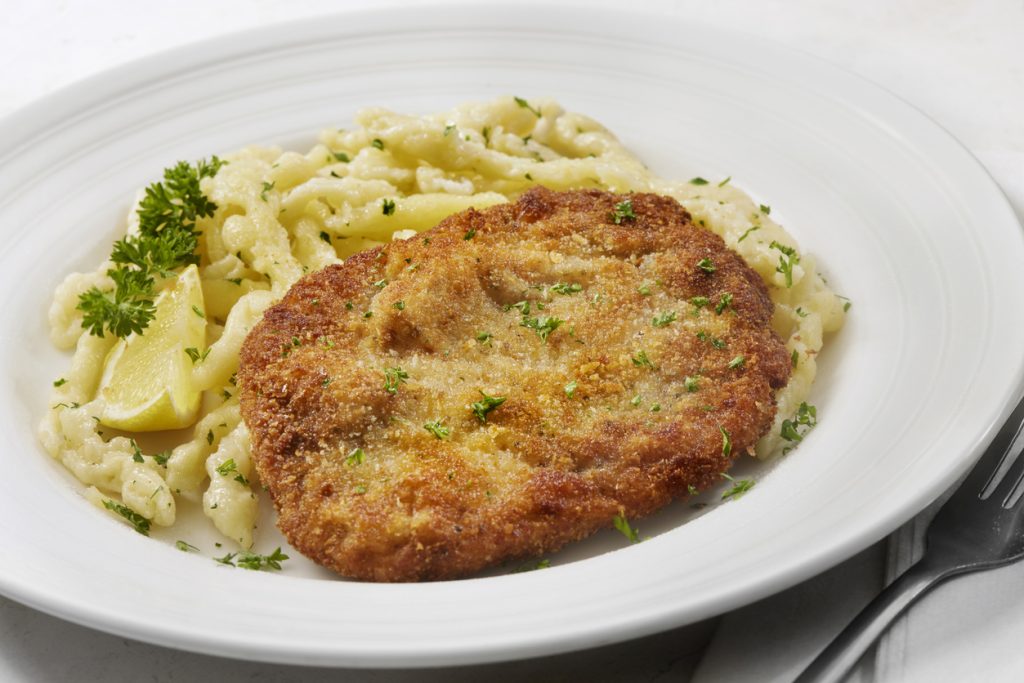
For one thing, the dish has very deep roots. They go back to historical evidence of Ancient Romans breading and frying thin slices of tenderized meat in the 1st century AD. References to “little chops with breadcrumbs” later appear in 12th century (AD 1148) documents from the archive of Saint Ambrose in Milan. A similar preparation, Wiener Backhendi, is listed in a 1719 book of Austrian recipes, and the current name Wiener Schnitzel was first noted in an 1831 German cookbook.
Furthermore, this is the official national dish of Austria (in German, Weiner means Viennese), and such a deep part of that country’s culture that Austrian law limits the use of the name Weiner Schnitzel to the original fried veal cutlet version only. The more common modern preparation, using much more economical pork cutlets, by law must be designated as Wiener Schnitzel vom Schwein. This is considered as merely a Viennese-style Schnitzel (Schnitzel Wiener Art) rather than the real thing. This is why, in Germany, this food appears in butcher shops and restaurants as Schweineschnitzel. If this nomenclature is all too confusing, rely on this handy Schnitzel mnemonic: A Schnitzel that’s not veal is not real.
There is Something About Schnitzel
Obviously, Germans and Austrians take this dish very seriously, and the mesmerizingly delicious taste of Schnitzel is evident in the breadth of its footprint on world gastronomy. In a near-universal adoption just short of that associated with alcoholic beverages, the Schnitzel theme appears globally, often traceable to European immigrants and colonists.
From chicken-fried beef steaks at truck stops in Texas, south to Milanesa in Mexico, Uruguay, and Argentina; across the Pacific to Japan where Tonkatsu vies for plate space with Torikatsu, Hamukatsu, and Menchikatsu (katsu=cutlet—ton=pig, tori=chicken, hamu=ham, menchi=minced [ground] beef), and on to Russia as Otbivnaya (a piece of meat that has been beaten).
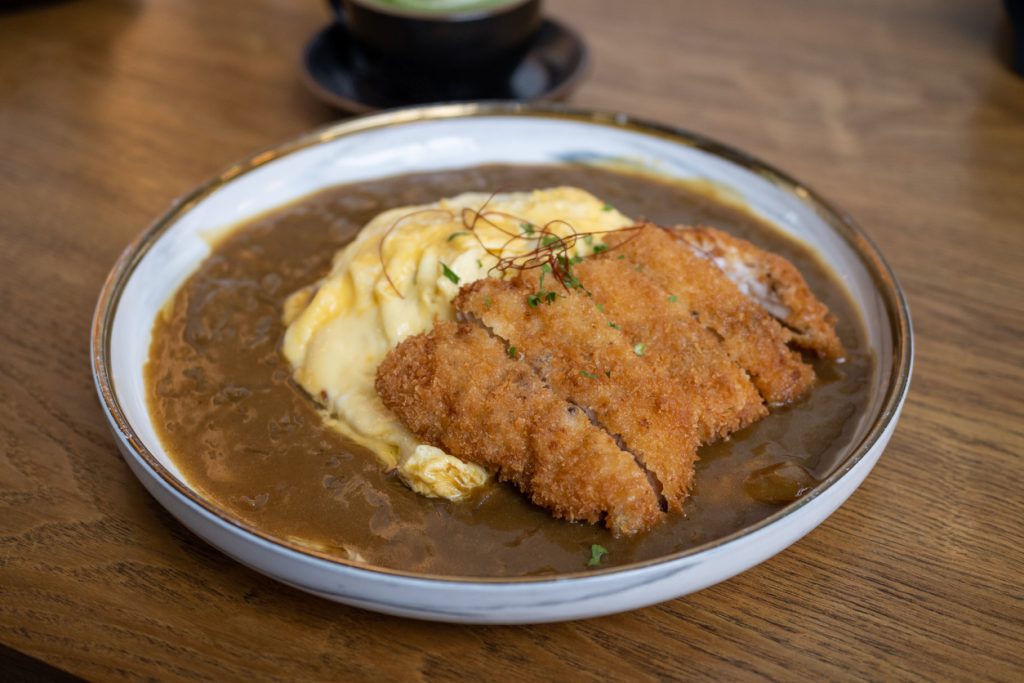
In Iran, the thick, spicy Shenitsel first appears in an 1898 cooking manual as Kabāb-e farangi (e firangi=from Europe). Kosher Shnitsel made with chicken breast is often described as a national dish in Israel. Down in Windhoek Namibia, German colonists left Schnitzel and the natives now top it with a fried egg. Back in Europe, the recipe is ubiquitous, including in Italy as Cotoletta alla Milanese, which some argue is the original Schnitzel recipe.
There is one thing that almost all the Schnitzels around the world have in common. Except in cases where a chef gets creative and slips in minced beef, ham, cheese, herring, pickles, and whatever else needs to be cleaned out of the refrigerator and deep-fried, the heart of a Schnitzel is simple—a thin piece of meat pounded as needed to make it appropriately flat and tender. Technically, whether veal, pork, beef, chicken, turkey, duck and so on, the thin piece of meat itself is the Schnitzel. It is often eaten unbreaded, as Schnitzel Natur, a common choice of health-conscious diners, or as called for by various recipes as noted below.
A Garden of Schnitzel Delights
In Germany, there are many Schnitzel variations beyond what are probably the most familiar three: Weiner Schnitzel, Panierte (Breaded) or German Schnitzel, and Jägerschnitzel—Hunterschnitzel—pork Schnitzel smothered in Jäger Sauce, a rich, creamy bacon-mushroom gravy (traditionally from mushrooms the hunter would have gathered in the forest). But local preferences along with creative tweaks in preparation and toppings have produced many variations on the theme.
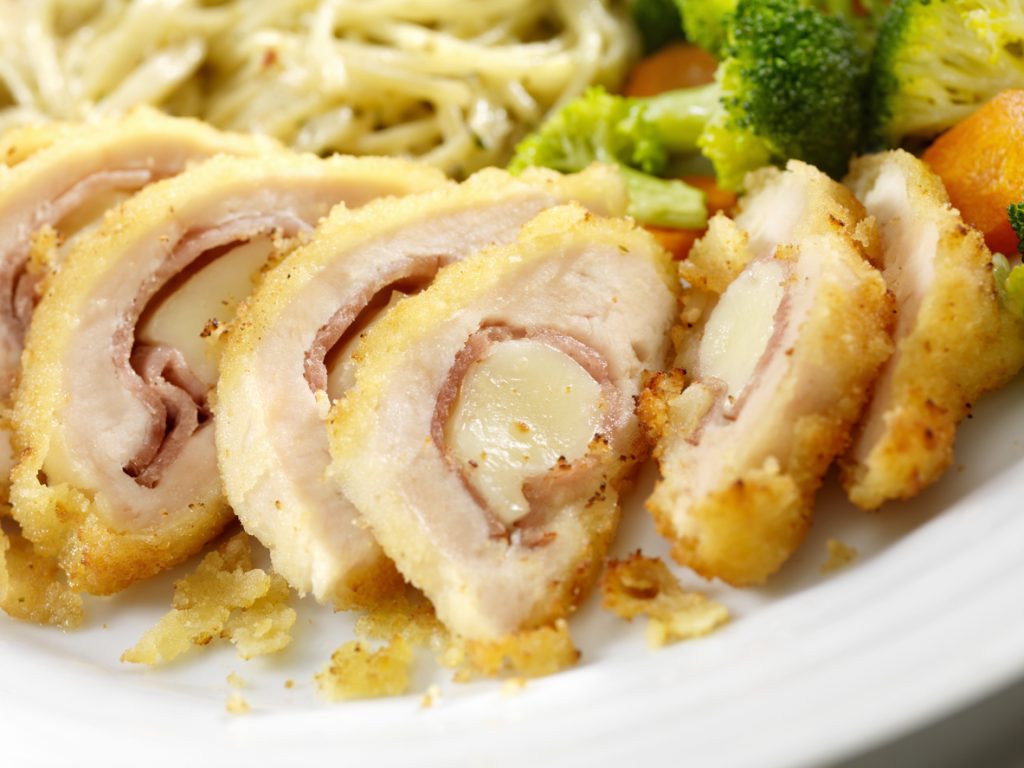
Rahmschnitzel comes with a smooth, creamy sauce. Paprikaschnitzel is topped with sautéed or roasted onions and bell peppers. Bierschnitzel is essentially a casserole of unbreaded Schnitzel topped with beer sauce and cheese. Zwiebelschnitzel is another Schnitzel casserole based on unbreaded chicken baked with a cream/wine/onion sauce and topped with cheese. And many diners know the famous Cordon Bleu-style Schnitzel with ham and cheese wrapped in pork or chicken. At the risk of sacrilege, it must also be mentioned that some pseudo-Schnitzel variations comprised of tofu, vegetables, and other non-meat products do exist.
Get Your Schnitzel On
Obviously, with all the variations on the theme available, it is not difficult to run into the opportunity to try Schnitzel of some sort. But if you are looking for an authentic German Wiener Schnitzel and happen to be in Key West, Martin’s Key West is your go-to. Chef Martin is a native German who began his professional culinary journey with training in Berlin, and his style is founded on the core skills required to create traditional, hearty German classical fare including the various Schnitzels that are so popular in the country.
German staples are known for the contrast between the simplicity of their ingredients and the complexity of execution required to satisfy the demanding palates of European diners. Chef Martin has decades of experience doing German food the right way, and his reputation as a Key West restaurateur is based on years of serving up good food and warm hospitality. If you would like to savor real Schnitzel done right, drop by Martin’s and try the traditional veal-based Wiener Schnitzel featured prominently on the dinner menu.
Enjoy Authentic German Fare with a Key West Tropical Twist
Chef Martin has been welcoming Key West locals and island visitors to the table for more than 30 years now, and to Martin’s Steak and Lobster on Duval Street since 2007. The steady stream of European tourists who stop by attests to the quality of the Wiener Schnitzel, Jägerschnitzel, Bratwurst, German Potato Soup, Spatzle, and other tastes of home found on the menu. Word has gone out that Martin’s is the place to go for hearty, satisfying German classics and a full selection of great beers and wines, all served fine dining style in an atmosphere that reflects the tropical ambience of Key West.

The menu at Martin’s also goes beyond German fare to take advantage of the great seafood available in the Florida Keys, and you will encounter the influence of the Caribbean tropics in many of the recipes, sauces, and seasonings used in Chef Martin’s kitchen. A creative Martini Menu and a great Happy Hour that is a local favorite are among the other attractions that make Martin’s Key West an island staple and a must-visit for tourists.
Welcome to Martin’s Key West
If you are looking for delicious German fare, prime cuts of American beef, or the freshest Key West seafood always prepared by hand, Martin’s Steak & Lobster in Key West is your destination. From tasty Happy Hour tapas plates to a Beef Wellington that has built a following of its own, for a special occasion, a relaxed dinner al fresco, or cocktails in the breezy lounge, welcome to Martin’s!


+ There are no comments
Add yours